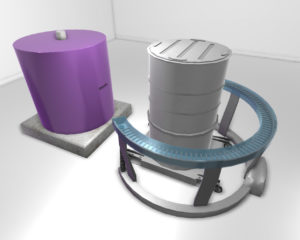The Information Barrier Experimental (IBX) enables the authentication of a nuclear warhead without revealing any sensitive information through the use of a low-resolution gamma spectrometry template-matching approach and a simple, transparent system design.
An overview of IBX
Making trusted measurements on nuclear warheads to confirm their authenticity without revealing design information remains one of the major challenges for nuclear arms control verification. One solution being developed is an information barrier, which displays the results of a sensitive measurement in a simple pass/fail manner. Information barriers could be used at a variety of facility types, including at dismantlement facilities, storage sites or deployment sites.
Designs for information barriers have involved a variety of measurement techniques and technology choices, and a number of prototypes have been developed. There are two basic concepts. The attribute concept would entail declaring attributes that are characteristic of a genuine warhead. Measurements would assess whether an inspected items meets the attributes, and return a pass/fail signal without disclosing the measurement results. The template concept would first entail recording a radiation signature from a warhead trusted to be genuine. The signature of an inspected item is then compared against the reference signature, and depending on the agreement of the two signatures, the pass/fail signal appears.
A variety of measurement systems could be used to assess both attributes and templates, in particular measurements of the signature of gamma rays that are always emitted by plutonium and uranium, and count rates of neutrons that are emitted by plutonium. By using an external radiation source directed at the item, reactions that produce additional gammas and neutrons (also in uranium) are produced. Such a signature may be more robust to cheating attempts.
A particular design challenge is that an inspected state must trust that the designed information barrier does not have a capability to transmit classified information to the inspector. The inspector must trust that the information barrier has not been tampered with to produce false results. This challenge sets very high requirements for the choice of soft- and hardware.
Resources & Links
- M. Göttsche, G. Kirchner, Measurement Techniques for Warhead Authentication with Attributes: Advantages and Limitation, Science & Global Security 22 (2), 2014.
LINK: scienceandglobalsecurity.org/archive/sgs22gottsche.pdf - J. Yan, A. Glaser, Nuclear Warhead Verification: A Review of Attribute and Template Systems, Science & Global Security, 23 (3), 2015. scienceandglobalsecurity.org/archive/sgs23jieyan.pdf
